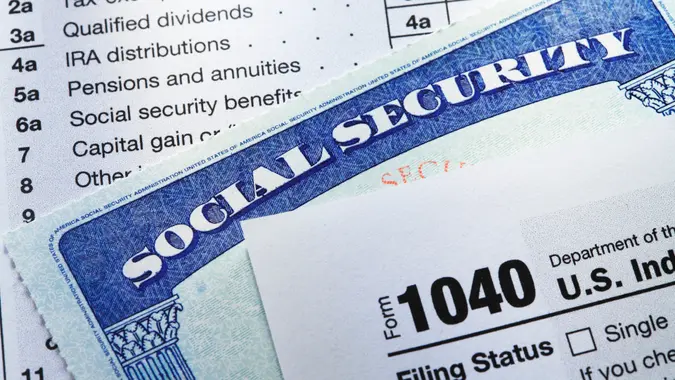3 Reasons the End of This Social Security Spousal Rule Can Help Boost Your Retirement Budget

Commitment to Our Readers
GOBankingRates' editorial team is committed to bringing you unbiased reviews and information. We use data-driven methodologies to evaluate financial products and services - our reviews and ratings are not influenced by advertisers. You can read more about our editorial guidelines and our products and services review methodology.

20 Years
Helping You Live Richer

Reviewed
by Experts

Trusted by
Millions of Readers
For decades, a Social Security spousal rule has allowed those planning for retirement to switch between their benefits and spouses to receive the maximum amount. That rule is scheduled to end this year for everyone except those who turned 70 on Jan. 1, 2024, which means you won’t be able to take advantage if you were born after Jan. 1, 1954.
As previously reported by GOBankingRates, under the expired rule, the higher-earning spouse would claim spousal benefits at full retirement age while the other spouse claimed their own benefit. The higher earner would then switch to their benefits at age 70, thus maximizing the monthly Social Security payment because of the delayed retirement credits, according to MarketWatch.
The lower-earning spouse would also be able to claim a spousal benefit or keep their own, depending on which is higher. The end of the rule means you need to find other strategies to maximize your spousal benefits. But the rule might also have a different impact — like boosting your retirement budget. Here are three reasons why:
Have One Spouse Delay Benefits
According to the Social Security Administration, if your spouse was born before Jan. 2, 1954, and has already reached full retirement age, they can choose to receive only the spouse’s benefit and delay receiving their own retirement benefit until a later date. This means they get a higher benefit.
But Don’t Delay Too Long
Normally, the longer you wait to collect Social Security retirement benefits, the bigger your check. Waiting until full retirement age guarantees that you will get the full benefit you are owed while waiting until age 70 ensures the maximum benefit. Just as workers face a reduced Social Security retirement payout if they claim early — such as at age 62 — those who delay their payouts will see them increase.
However, spouses can’t take advantage of the age 70 rule because their payout is capped at 50% of the primary beneficiary’s full retirement benefit. Even if your spouse waited until age 70 to collect Social Security, your maximum benefit would remain at 50% of the primary beneficiary’s FRA benefit amount. In this case, your retirement budget will benefit by not waiting too long to claim.
Plan Ahead
Making the most of Social Security spousal benefits requires having discussions about who should claim benefits and when. Social Security always pays the higher of the individual’s benefits or spousal benefits to the lower earner. Couples looking to claim benefits are advised to create an online account with the Social Security Administration so they can review their estimated benefits at various claiming ages.
As the SSA noted, the value of your spouse’s benefits, added to your own, can help you decide if taking your benefits sooner might be more advantageous. Picking the right ages is a vital part of retirement planning and will have a positive financial impact.
 Written by
Written by  Edited by
Edited by 
























